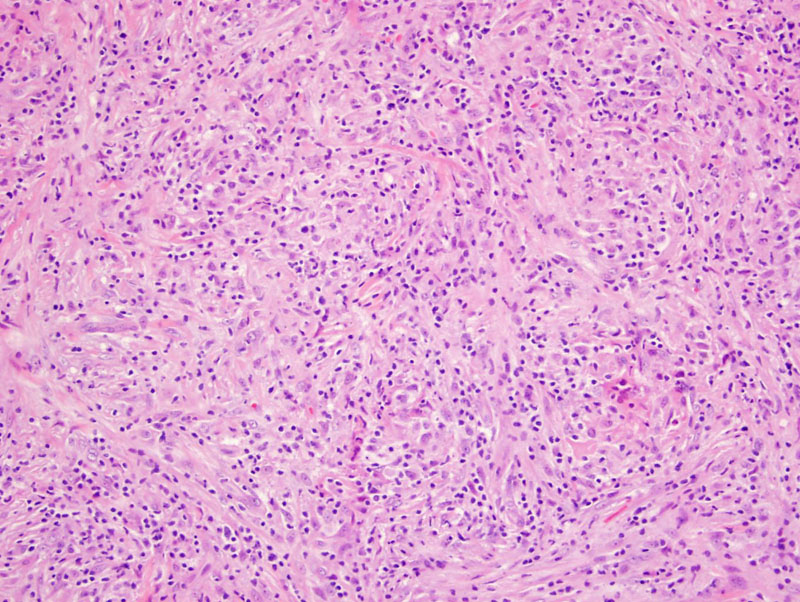

A heavy inflammatory infiltrate obscures the thyroid parenchyma.
Yet another view of how the inflammation permeates the thyroid. There is no residual normal thyroid parenchyma.
Histiocytes are abundant. Note the stromal fibrosis. Giant cells were not readily seen in this case.
This second case has more preserved thyroid.
Multinucleated giant cells are prominent in this instance. They can be seen engulfing collagen.
Subacute thyroiditis is a general term that can describe any of three entities: (1) subacute granulomatous thyroiditis, a.k.a. De Quervain thyroiditis (2) lymphocytic thyroiditis a.k.a. subacute painless thyroiditis, (3) postpartum thyroiditis.
Although the etiology for all three conditions are different, the clinical presentation is similar in that intially, there is hyperthyroidism due to destruction of thyroid follicles with release of preformed thyroid hormone. Then, there is a period of hypothyroidism followed by a return to the euthyroid state.
Subacute granulomatous (De Quervain) thyroiditis is painful and is generally self-limited. The pathogenesis is thought to be a virally mediated. Histologically, there is destruction of thyroid follicles and a heavy inflammatory infiltrate with the presence of histiocytes and multinucleated giant cells.